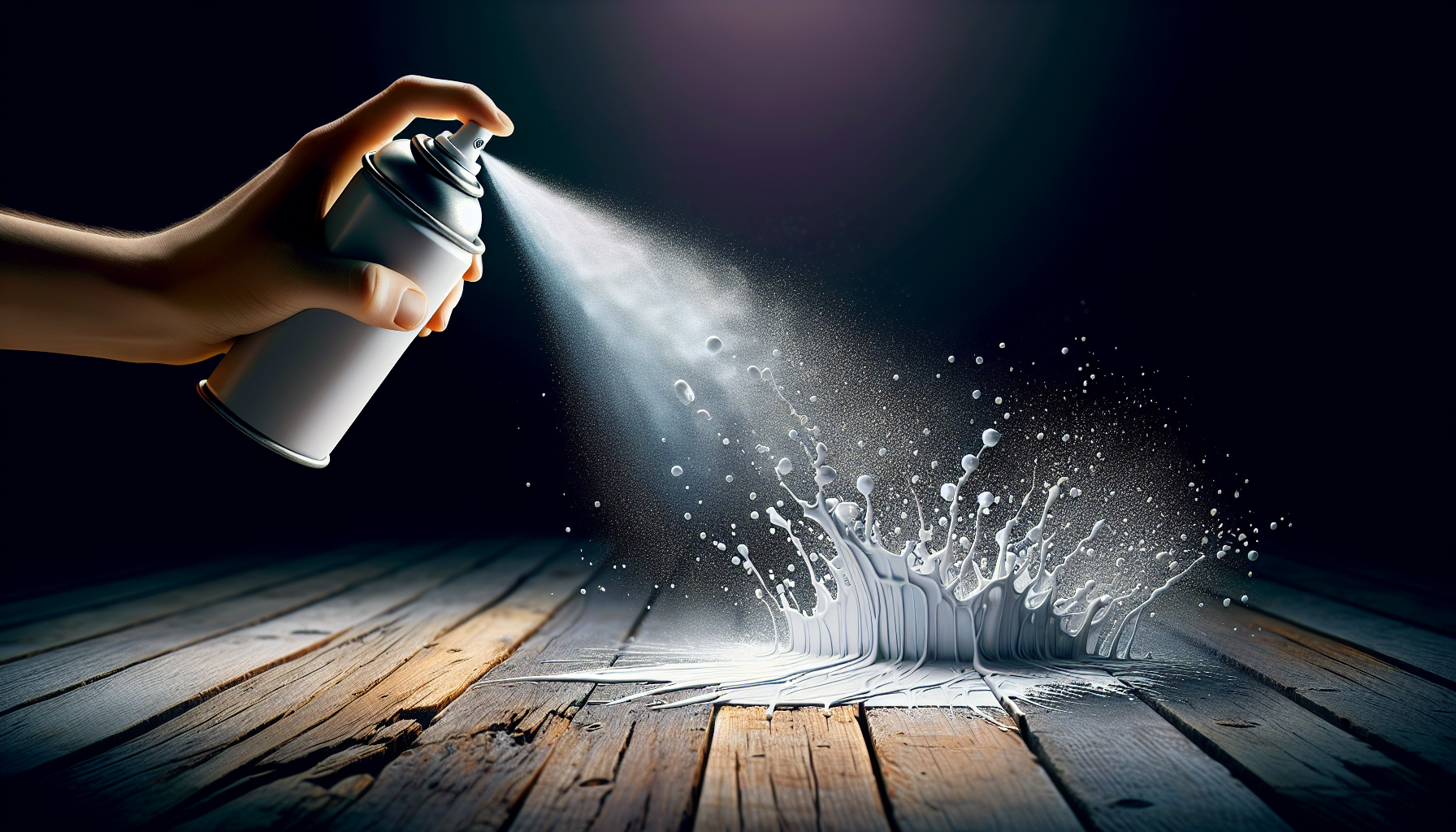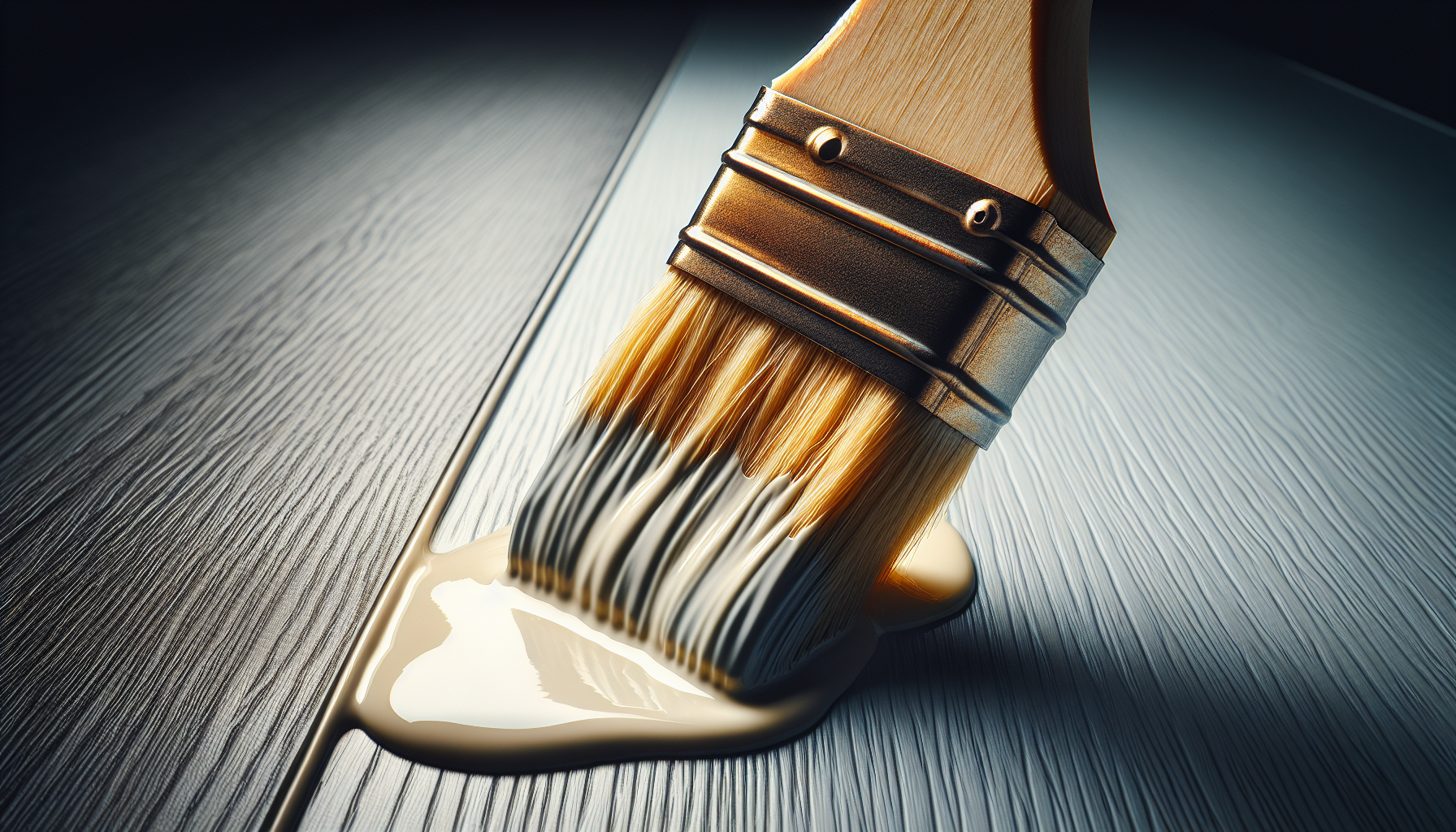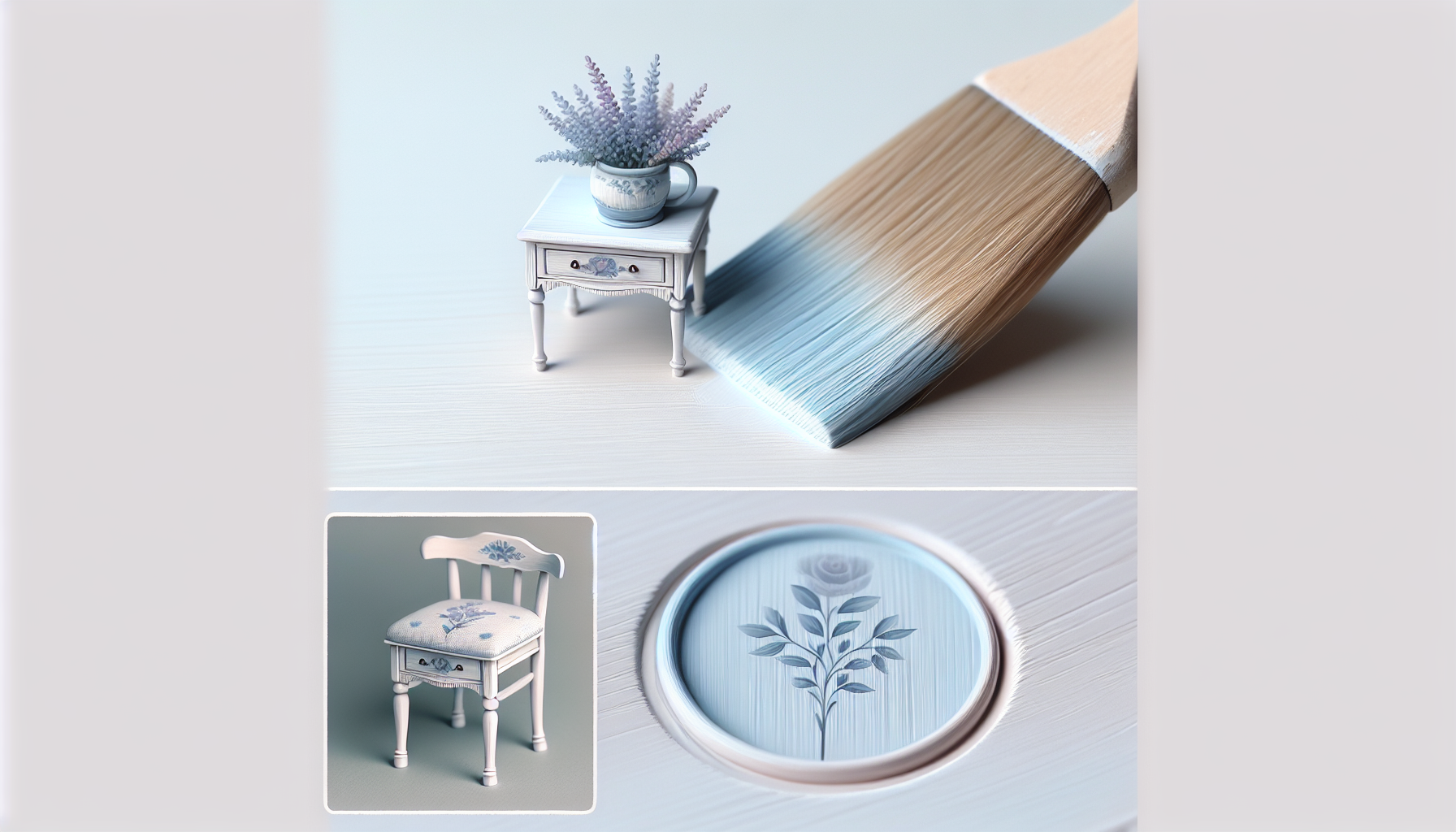In the world of furniture refinishing and DIY projects, one common question often arises: can polyurethane be used over chalk paint? This question has sparked debates and discussions among enthusiasts and professionals alike. While chalk paint offers a unique matte finish and easy application, some may wonder if adding a layer of polyurethane would enhance its durability and longevity. In this article, we will explore the compatibility of polyurethane and chalk paint, examining the benefits and considerations to help you make an informed decision for your next project.
Understanding Chalk Paint
What is Chalk Paint?
Chalk paint is a type of paint that is known for its matte, velvety finish and its ability to adhere to surfaces without the need for extensive surface preparation. Unlike traditional paint, chalk paint does not require sanding or priming before application, making it a popular choice for furniture refurbishment and other decorative projects. Chalk paint gets its name from its chalky appearance and texture, similar to that of a chalkboard.
Benefits of Chalk Paint
There are several benefits to using chalk paint for your painting projects. First and foremost, the ease of application is a major advantage. With chalk paint, you can achieve a beautiful finish with minimal effort. The paint adheres well to various surfaces, including wood, metal, and even glass. Its ability to cover imperfections and provide a smooth, matte finish is particularly appealing to those looking to revamp older furniture pieces.
Another advantage of chalk paint is its versatility. It can be easily customized by mixing different colors together or by adding water to create a more washed-out effect. Additionally, chalk paint is often praised for its quick drying time, allowing for faster project completion. It is also relatively low in odor, making it a suitable option for indoor use.
Chalk Paint Application
When applying chalk paint, it is important to ensure that the surface is clean and free of any dirt, grease, or loose material. This can be achieved by simply wiping the surface with a damp cloth or sponge. Unlike traditional paint, there is no need for extensive sanding or priming.
To apply the paint, use a high-quality brush or roller and apply in thin, even coats. A second coat may be necessary to achieve the desired finish, although this may vary depending on the color and texture of the surface being painted. It is important to allow each coat to dry completely before applying additional layers.
Curing Time of Chalk Paint
Chalk paint typically dries to the touch within 30 minutes to an hour, depending on factors such as humidity and temperature. However, it is important to note that chalk paint requires a curing period to fully harden and become more durable. The curing process can take up to 30 days, during which the painted surface should be handled with care to avoid scratching or damaging the finish. It is advisable to avoid placing heavy objects or using the painted surface until it has fully cured.
Introduction to Polyurethane
What is Polyurethane?
Polyurethane is a type of resin-based coating that provides a protective and durable finish to various surfaces. It is commonly used to seal and protect wood, but it can also be applied to other materials such as concrete, metal, and even chalk paint. Polyurethane comes in different forms, including oil-based and water-based varieties, each with its own unique characteristics.
Types of Polyurethane
There are two main types of polyurethane: oil-based and water-based. Oil-based polyurethane is known for its amber tint and ability to enhance the natural color and grain of wood. It provides a durable and long-lasting finish but tends to have a stronger odor and longer drying time compared to water-based polyurethane.
Water-based polyurethane, on the other hand, has a clear, non-yellowing finish and dries much faster than its oil-based counterpart. It is low in odor and is often preferred for indoor applications due to its environmental friendliness. However, it may not provide the same level of durability as oil-based polyurethane, especially for high-traffic areas.
Advantages of Polyurethane
Polyurethane offers numerous advantages as a protective finish. It creates a hard, durable coating that is resistant to scratches, stains, and water damage. It also provides UV protection, preventing the sun’s rays from fading or yellowing the underlying surface. Additionally, polyurethane enhances the natural beauty of wood, bringing out its rich color and grain pattern.
Another advantage of polyurethane is its versatility. It can be applied to a variety of surfaces, including furniture, floors, cabinets, and even artwork. It comes in different sheens, ranging from high-gloss to satin, allowing for customization according to personal preferences and project requirements.
Polyurethane Application
Before applying polyurethane over chalk paint, it is essential to prepare the surface properly. This includes cleaning the chalk painted surface, sanding to create a rough texture for better adhesion, and removing any dust or debris. Testing for adhesion is also important to ensure that the polyurethane will bond effectively with the chalk paint.
When applying polyurethane, it is crucial to choose the right type and sheen based on the desired outcome. Using a high-quality brush or sprayer, apply thin, even coats of polyurethane, allowing each coat to dry completely before applying additional layers. Multiple coats may be necessary to achieve the desired level of protection and finish. It is important to note that sanding between coats is recommended to create a smooth surface and ensure proper adhesion.
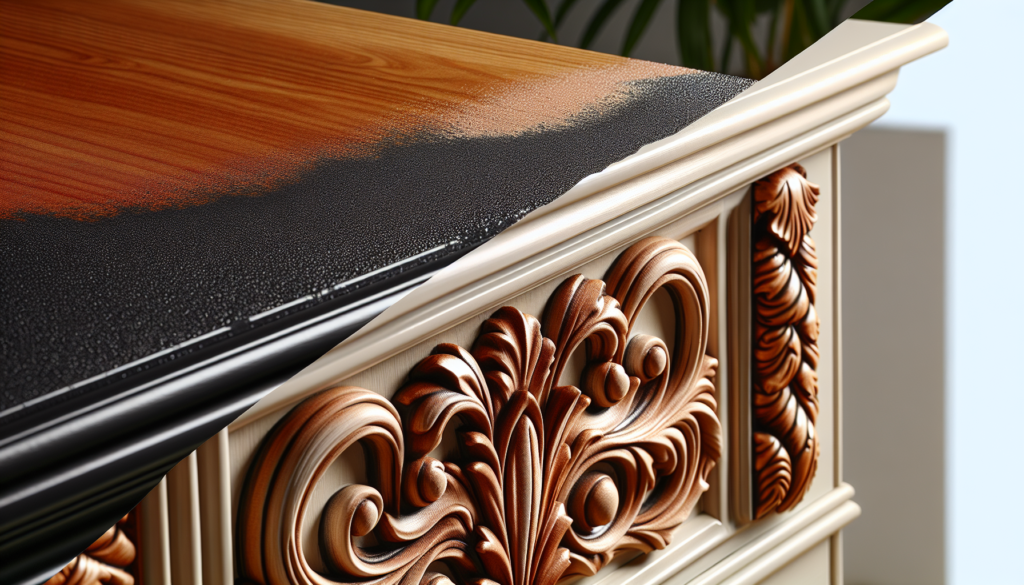
Can You Use Polyurethane Over Chalk Paint?
Compatibility of Chalk Paint and Polyurethane
The compatibility of chalk paint and polyurethane depends on various factors such as the type of chalk paint and the type of polyurethane being used. In general, polyurethane can be applied over properly prepared and cured chalk paint surfaces. However, it is crucial to conduct a small test in an inconspicuous area before proceeding with the application on a larger scale.
Advantages of Using Polyurethane Over Chalk Paint
Using polyurethane over chalk paint offers several advantages. First and foremost, it provides an added layer of protection to the chalk painted surface, making it more resistant to wear and tear. Polyurethane acts as a barrier against scratches, stains, water damage, and fading caused by sunlight exposure.
Furthermore, polyurethane can enhance the appearance of chalk paint by adding a subtle sheen and depth to the finish. It can also bring out the colors and textures of the chalk paint, giving it a more polished and professional look.
Disadvantages of Using Polyurethane Over Chalk Paint
Although there are advantages to using polyurethane over chalk paint, there are also a few potential drawbacks to consider. One of the main concerns is the potential for yellowing over time, especially with oil-based polyurethane. This can alter the appearance of the chalk paint, particularly on lighter or pastel-colored surfaces.
Another disadvantage is that polyurethane creates a more durable and protective surface, which can make it challenging to distress or achieve a vintage look commonly associated with chalk paint. Polyurethane may also add a slight gloss or sheen, which may not be desirable for those seeking a completely matte finish.
Preparing the Surface
Cleaning the Chalk Painted Surface
Before applying polyurethane over chalk paint, it is crucial to ensure that the surface is clean and free from any dirt, wax, oil, or other contaminants. Use a mild detergent or cleaner and a damp cloth or sponge to gently clean the painted surface. Allow it to dry completely before proceeding to the next step.
Sanding the Chalk Painted Surface
To promote adhesion between the chalk paint and polyurethane, it is necessary to create a slightly rough surface. Lightly sand the chalk painted surface using fine-grit sandpaper or a sanding block. Be cautious not to sand too aggressively, as excessive sanding can remove the chalk paint and expose the underlying surface.
Removing Dust and Debris
After sanding, remove any dust or debris from the surface using a tack cloth or a lightly dampened cloth. Ensure that the surface is completely clean and dry before proceeding with the application of polyurethane.
Testing for Adhesion
Before applying polyurethane over a large area, conduct a small test in an inconspicuous spot to check for adhesion. Apply a small amount of polyurethane to the test area, following the recommended application technique. Allow it to dry and cure according to the manufacturer’s instructions. After the curing period, check for any signs of peeling, bubbling, or incompatibility. If the test area indicates poor adhesion or other issues, it may be necessary to reconsider using polyurethane over the chalk paint.
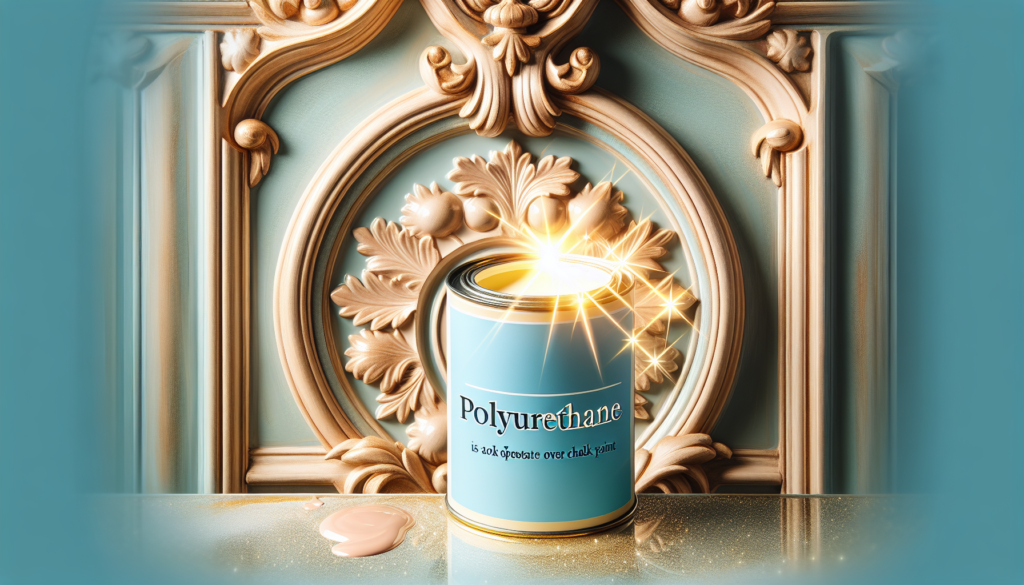
Applying Polyurethane over Chalk Paint
Choosing the Right Polyurethane
When applying polyurethane over chalk paint, it is crucial to select the appropriate type and sheen of polyurethane based on the desired outcome. Consider factors such as the level of protection required, the appearance desired, and the environment in which the painted surface will be located.
Brushing or Spraying Polyurethane
Polyurethane can be applied using either a brush or a sprayer, depending on personal preference and the nature of the project. Using a high-quality brush, apply thin, even coats of polyurethane in the direction of the wood grain, if applicable. If using a sprayer, ensure the polyurethane is properly diluted and follow the manufacturer’s instructions for application techniques.
Application Techniques
To achieve a smooth and even finish, apply polyurethane in thin coats. Avoid overbrushing or applying too much product, as this can lead to drips, bubbles, or an uneven finish. The brush or sprayer strokes should be long, continuous, and parallel to achieve optimal results. Allow each coat to dry completely before applying additional layers.
Multiple Coats and Drying Time
Depending on the level of protection desired, multiple coats of polyurethane may be necessary. Sand lightly between each coat to create a smooth surface and promote better adhesion. Allow each coat to dry according to the manufacturer’s instructions before applying the next coat. The drying time may vary depending on the type of polyurethane and environmental conditions.
Finishing Touches
Sanding Between Polyurethane Coats
Sanding between coats of polyurethane is crucial to create a smooth surface and remove any imperfections such as brush strokes or dust particles. Use fine-grit sandpaper or a sanding block to lightly sand the surface. Wipe away any dust before applying the next coat of polyurethane.
Removing Imperfections
If any imperfections, such as bubbles or drips, are present after the polyurethane has dried, they can be addressed by lightly sanding the affected area in the direction of the wood grain. After sanding, remove the dust and touch up the area with an additional coat of polyurethane if necessary.
Applying Final Protective Coat
Once the desired number of polyurethane coats has been applied, consider adding a final protective coat for added durability. This can be done using the same application techniques as before, ensuring that the surface is clean and dry before proceeding.
Curing and Drying Time
After the final coat of polyurethane has been applied, it is important to allow sufficient time for curing and drying. While the drying time may vary based on the specific polyurethane used, it is generally recommended to allow at least 24 to 48 hours for the polyurethane to cure before subjecting the painted surface to regular use.
Pros and Cons
Benefits of Using Polyurethane Over Chalk Paint
Using polyurethane over chalk paint offers several benefits. It provides an additional layer of protection, making the surface more resistant to damage from scratches, stains, and water. Polyurethane also enhances the appearance of chalk paint by adding a subtle sheen and depth, bringing out the colors and textures of the paint. Additionally, polyurethane offers UV protection, preventing fading and color change caused by sunlight exposure.
Drawbacks of Using Polyurethane Over Chalk Paint
There are a few potential drawbacks to using polyurethane over chalk paint. One concern is the potential for yellowing, especially with oil-based polyurethane. This can alter the color and appearance of the chalk paint, particularly on lighter surfaces. Additionally, polyurethane creates a more durable and protective surface, making it challenging to distress or achieve a vintage look commonly associated with chalk paint. The slight gloss or sheen that polyurethane adds may also not be desirable for those seeking a completely matte finish.
Alternative Finishes for Chalk Paint
Wax as a Protective Finish
A popular alternative to polyurethane for protecting chalk paint is wax. Wax creates a soft, matte finish and offers a subtle sheen. It can be applied using a brush or cloth, and the excess can be wiped away for a smooth surface. While wax provides a good level of protection, it may require periodic reapplication to maintain its effectiveness.
Water-Based Varnish as a Coating
Water-based varnish is another alternative finish for chalk paint. It provides a clear, non-yellowing protective coating that enhances the appearance of chalk paint. Water-based varnish is easy to apply, dries quickly, and offers good durability. However, it may not provide the same level of protection as polyurethane, especially in high-traffic areas.
Other Polyurethane Alternatives
In addition to traditional polyurethane, there are other alternatives available for protecting chalk paint. These include water-based polyacrylic, which provides a clear finish that resembles oil-based polyurethane without the risks of yellowing, and shellac, which offers good protection and dries quickly but may have a shorter lifespan compared to polyurethane.
Conclusion
Key Takeaways
- Chalk paint is a versatile and easy-to-use paint that provides a matte, velvety finish.
- Polyurethane is a protective coating that enhances the durability and appearance of various surfaces, including chalk paint.
- Before applying polyurethane over chalk paint, proper surface preparation is necessary, including cleaning, sanding, and testing for adhesion.
- Polyurethane can be applied using brushes or sprayers, and multiple thin coats are recommended for optimal results.
- Considerations include the desired level of protection, appearance, and the potential for yellowing or glossiness.
Considerations before Applying Polyurethane on Chalk Paint
Before applying polyurethane over chalk paint, it is important to carefully consider the specific requirements of your project. Evaluate the level of protection needed, the desired appearance, and the potential drawbacks such as yellowing or loss of the chalk paint’s matte finish. Alternative finishes like wax or water-based varnish may be preferable in certain situations.
By understanding the compatibility, benefits, and drawbacks of using polyurethane over chalk paint, you can make an informed decision that best suits your needs and achieves the desired result for your painted surface.

